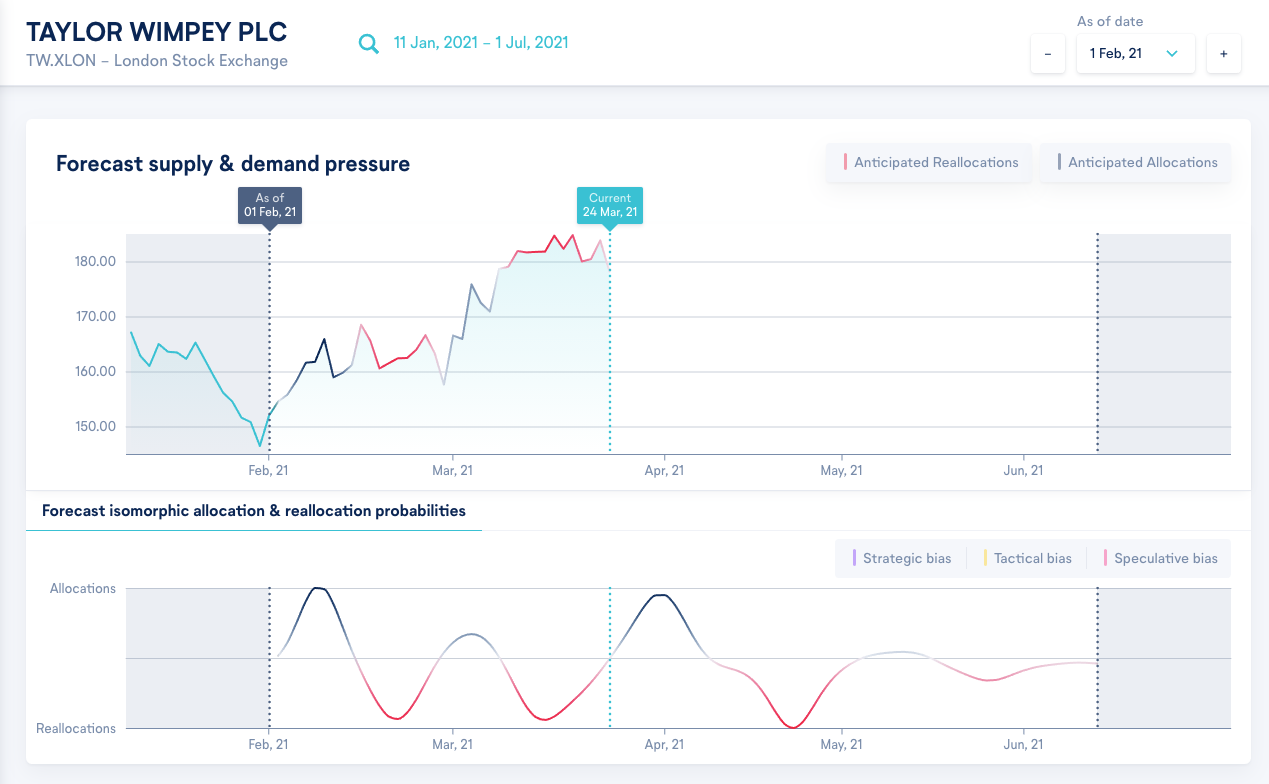
The Social Side of Capital
Inferring Connections Between Portfolios
By Grant Fuller
From Keynes's 'beauty contest' to Irithmics' artificial intelligence - decoding the anticipations of others
The Armchair Trader has used some Irithmics data to provide commentary to their recent story on UK house builder, Taylor Wimpey.
Irithmics’ AI has learnt to recognise and classify patterns in the behaviour and portfolios of institutional investors. The Armchair Trader article describes investors as being ‘more bullish on… the long term picture’. More specifically, the data being referred to are Irithmics’ AI assessments of patterns in institutional behaviour classified as being ‘strategic views’ and which appear to influence how institutional capital and risk are allocated. Strategic views, beliefs or outlooks are predominately influenced by fundamental economic or financial data.
The Armchair Trader’s article demonstrates the value and insight from using Irithmics’ AI to analyse institutional allocation behaviour in this matter, illustrating how the technology and data complements and support human driven analysis (in this case, David Madden from CMC Markets).
To appreciate the significance of Irithmics’ AI analysis, it is necessary to understand that Irithmics is not analysing Taylor Wimpey itself. Instead, Irithmics’ AI is analysing the institutional allocation behaviours of investors and their implications for Taylor Wimpey.
This is not a new idea. The 1930s economist John Maynard Keynes famously considered professional investors to be involved with an intricate guessing game, similar to a common newspaper competition of his time ‘in which the competitors have to pick out … those that he thinks likeliest to catch the fancy of the other competitors, all of whom are looking at the problem from the same point of view.’ Keynes goes on to describe this as a ‘third degree’ problem ‘where we devote our intelligences to anticipating what average opinion expects the average opinion to be.’ The Nobel laureate Richard Thaler considers that Keynes’s analogy ‘remains an apt description of how financial markets work.’
‘Successful investing’, according to Keynes therefore, ‘is anticipating the anticipations of others.’
Figure 1 shows Irithmics’ AI assessment of the ‘anticipations of others’ towards Taylor Wimpey. More specifically, it shows Irithmics’ AI estimating supply and demand pressure from the collective allocation or reallocation of institutional capital. The dynamics of price formation in markets is a complex process and it’s important to note that Irithmics’ AI does not, and cannot, make any comment about the current or future share price.

Using Irithmics’ AI we learn how these anticipations are developing and evolving. Corporates, their advisors, asset and risk managers learn where market behaviour is consistent with investors’ anticipations, or where other salient extrinsic data or events have disrupted or challenged investors’ views.
We’d like to think Keynes would have approved of Irithmics’ AI “anticipating the anticipations of others”.
Schedule a demo or get in contact for more details.
Get the latest on products updates, research and articles.